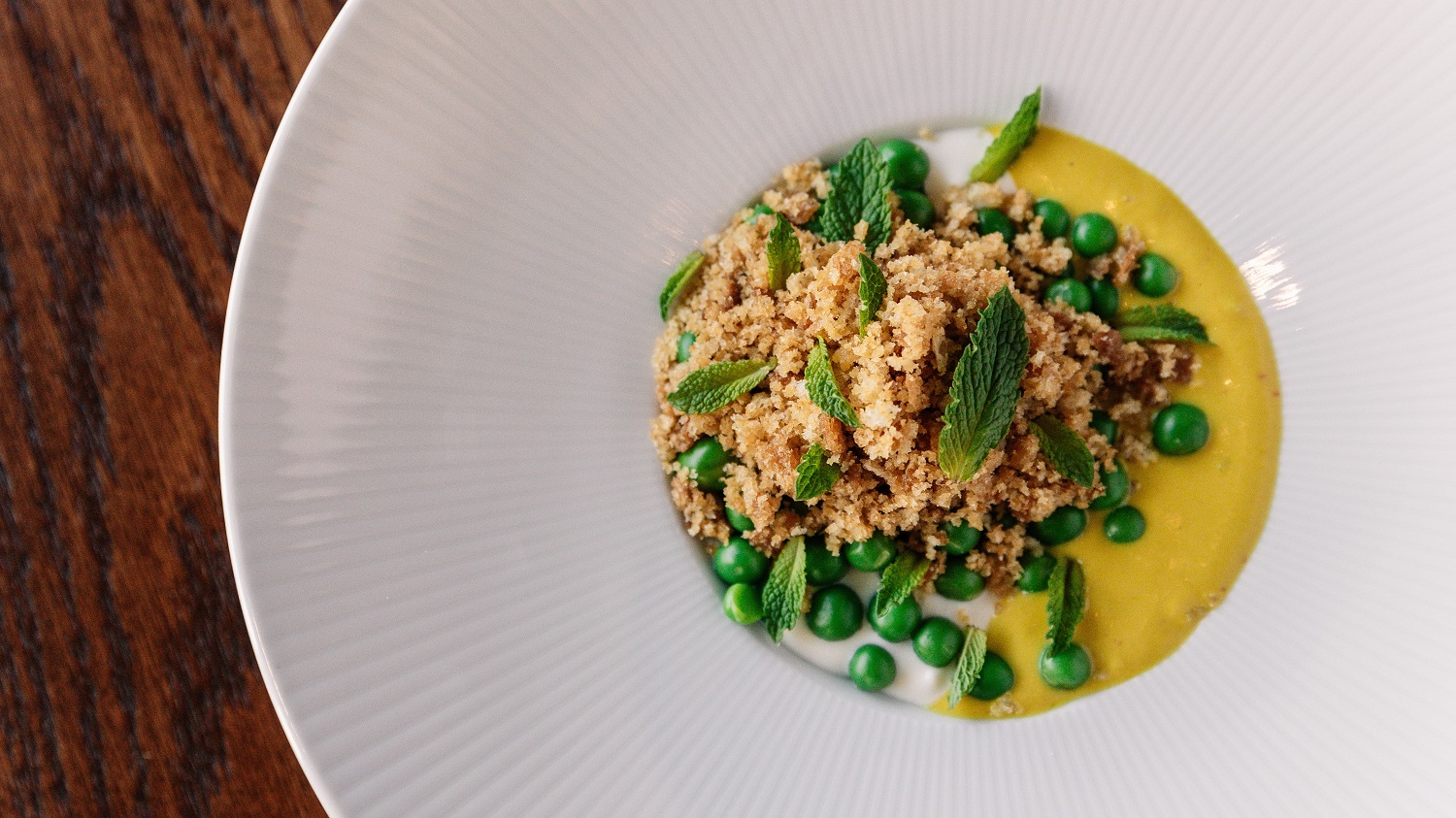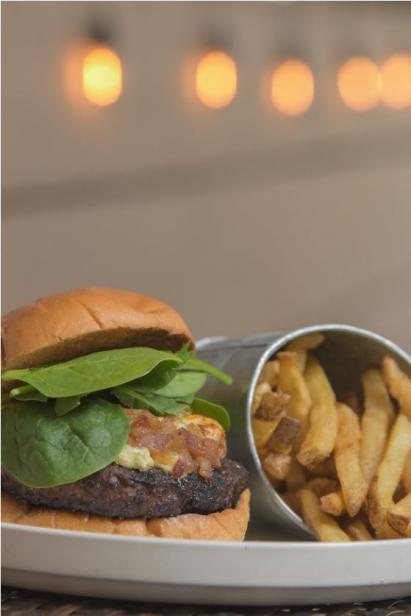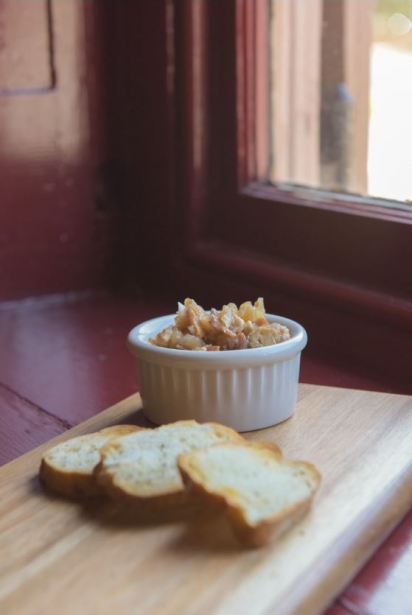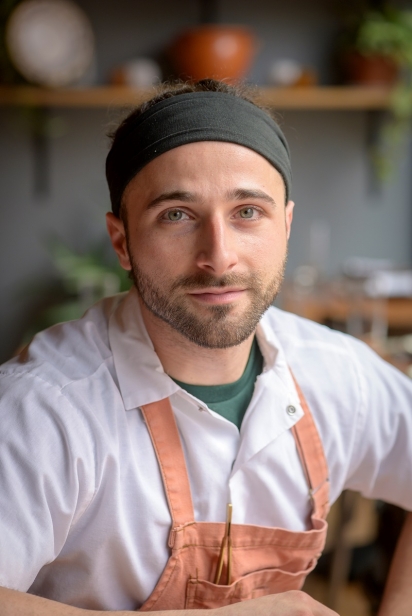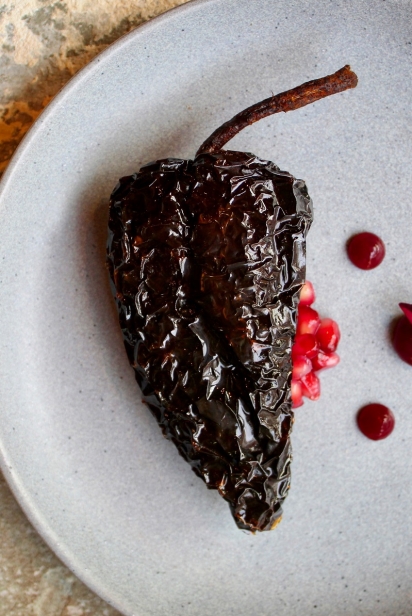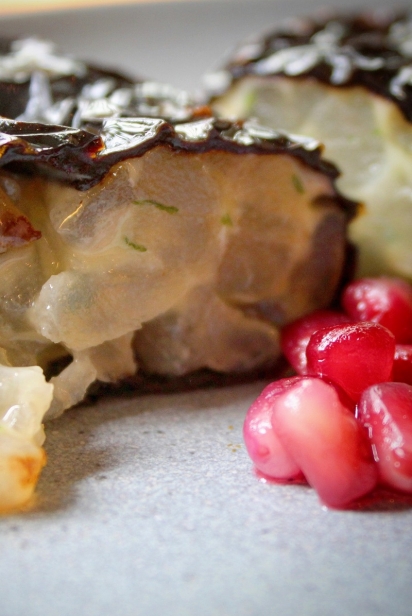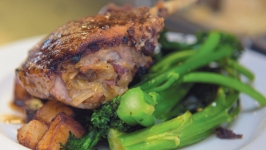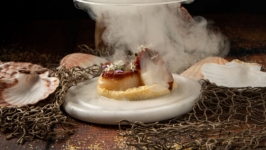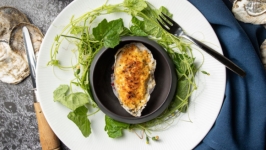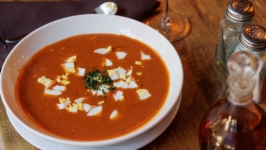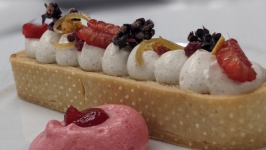Creative Chefs: Fashioning a Seasonal Menu
In the spring, to paraphrase Tennyson, a young chef’s fancy turns not to thoughts of love, but to thoughts of creating a fresh summer menu and a special new dish or two. Even experienced chefs feel a similar tingling. Yet the summer of 2020 was not a hopeful one for most of the hospitality business, and it was a downright awful one for the majority of restaurant chefs.
Chef Tyler Akin – Le Cavalier
Now, a new year and a new summer brings with it new hope. So perhaps that’s why there is a discernible spring in the step of Chef Tyler Akin as he comes out of the kitchen and into the dining room of Le Cavalier at the Green Room at the Hotel DuPont. This morning, he probably flipped pancakes a little higher as well.
“Spring is special for any chef,” Akin says. “In January and February, your suppliers don’t yet know what they will have available in spring and summer. So for me, it all begins with memory. I begin by thinking of dishes I have eaten out at other restaurants or that I’ve cooked before and what’s worked. It’s sort of a mental Rolodex of which flavors have gone well together.”
As we talk mid-day in early March, Le Cavalier – known more familiarly as “Le Cav” – is quiet. Although opening an eatery in the middle of a pandemic is hardly an ideal situation, last year Akin had no choice. The wheels were already rolling in 2019 to refresh the hotel’s classic Green Room and provide a vibrant in-house restaurant for the new owners of the hotel that for a century has been a Wilmington legend.
Fortunately, Akin, who is a co-owner of Le Cav, had planned from the beginning to have outside patio seating. While something that would have been totally out of character for the original establishment, last summer this arrangement gave Le Cav an opportunity to serve customers at a time when indoor seating was considered iffy while producing some welcome revenue. However, over the cold winter months, hours were cut back, and lunches vanished.
Now Akin is excited again to be working on a second-year summer menu. “It’s more challenging to be creative in a brasserie-style restaurant,” he says, “because you have to have the mainstays that are familiar – one poultry entree, one red meat, one fish, one game meat, one duck, one burger.” For his new menu, it is the duck dish that has particularly caught Akin’s attention. He shows me a draft menu, and listed among the entrees is not only the expected steak frites, a slab of beef and fries, but also a duck frites – a breast of dry-aged Pekin duck with charred pickled ramps and béarnaise sauce.
Most people approach food by either putting similar elements together – tastes, textures, sweetness or acidity – or by finding contrasts that balance each other. Akin is in the latter camp. “I love being counter-intuitive, even with drinks” he says, “so rather than using a cloying fruity sauce, like orange, I’m using béarnaise instead, which is synonymous with steak. It will provide nuttiness and richness. And, since it is spring, I’m using some green herbs in the sauce.”
How does he go about testing a dish to see what works and what doesn’t? “I began by starting conversation with my supplier, D’Artagnan, whom I’ve worked with for a long time,” Akin says. “We talked about their supply and sources of duck, the pricing and whether I could get samples in advance.” When he secured the sample breasts, Akin was interested in two things primarily – the curing and the aging.
“We took four breasts for side-by-side treatment,” he says. “Two were cured with two percent salt per weight, and two with one percent. One of each was then aged four days, and one of each was aged seven days.” At this stage, he says, he still isn’t decided on which cure and which age will win out.
Then, of course, there is the matter of the frites – another counterintuitive stroke. Fish and chips? A natural, though not at Le Cav. Steak frites? But of course. One’s on the menu, using a classic French bavette cut for the steak.
Akin is also excited about a new produce ingredient. “This year we’re introducing to our menu red rice from the South of France, which one of our vendors was able to get. I’m excited about that,” Akin says. Right now, its place on the working menu is matched with chicken Provençal.
Le Cavalier
42 West 11th Street, Wilmington, (302) 594-3154
Chef Zane Dippold – Cantwell’s Tavern
With Chef Zane Dippold, the challenge to change is working within a tradition. His Cantwell’s Tavern in Odessa, a part of the Ashby Hospitality Group in partnership with the Historic Odessa Foundation, dates back to 1822 when it was built by William Polk. Then known as Cantwell's Bridge Hotel and Tavern, it continued serving both functions for the next 100 years. While Dippold’s menu doesn’t have to follow the strictures of historic preservation that the old brick building does, there is the expectation that the food will at least give a nod to post-Colonial tavern cuisine.
“Sometimes a new dish begins as something we ran in the past which was popular or as something that was on the menu in a different form, and we pair it with something else,” he says. Recently, for example, he revised the standard seared pork chop on the menu by stuffing it with a bacon jam and served with a side of scalloped potatoes. Bacon jam? What’s in that? “Bacon, of course,” Dippold says, “with onions, black coffee, brown sugar, Balsamic and apple cider vinegar.”
The combination sounded so good that I took a break from writing to make bacon jam at home in a skillet, using the same ingredients and judging the amounts of each to use according to taste. It turned out to be a quite complex taste and a quite good one, going very well the chop.
Dippold adds and deletes from the menu on a regular basis, using the classic method of testing a new or revisited dish first as a daily special and then formally adding it to the menu if it proves popular in the test run.
Cantwell’s Tavern
109 Main Street, Odessa, (302) 376-0600
Chef Antimo DiMeo – Bardea
A staple on Wilmington’s Market Street, Chef Antimo DiMeo’s Bardea is known as an Italian eatery. In theory, at least. “We’re Italian, but I pull in dishes from all sorts of inspiration,” DiMeo says. “I eat, drink and breathe food, so I get inspiration from everyday things. I have a diverse staff, and I get ideas from them as well.”
A glance at any Bardea menu bears this out, as ingredients pop up representing the five major continents and quite a few islands as well. I ask DiMeo to go through the evolution of one dish for me, but it turns out as difficult to follow as me in an SUV chasing a Grand Prix driver through the Alps. “Let’s take for example the fluke tartare, which is new for our raw bar,” he says, and shares an enthusiastic flurry of cures, procedures and ingredients that end up in a complex dish described on the menu as “fluke tartare with ancho, walnut crème fraiche and pomegranate.”
DiMeo says he doesn’t always wait for a change of season to add something new to the menu. “Things are always evolving,” he says. “After a couple of months I get inspired to start changing things.” What, I ask, does he do when he’s tired of something that is a favorite of the customers? “I replace it with something new,” he laughs, “and that becomes the new fan favorite.”
Bardea
620 North Market Street, Wilmington, (302) 426-2069
Chef Robert Lhulier – Robert Lhulier Cuisine
Robert Lhulier is well known to most lovers of fine food in northern Delaware as he has “cheffed” in several restaurants including his own. Now Lhulier offers pop-up dinners, wine dinners, cooking classes, and “bespoke catering” to his customers. So he is free to create however his mood (and his customer’s wishes) takes him.
“When I create dishes, I essentially look at the parts as components, and not just as starch, protein, veg and so on,” Lhulier says. “I am looking for balance of textures, temperatures, aromas, acid and sweet, savory and fresh.” He confesses to always using spicy elements, “not so they take over a dish, but only so that they complement the other pieces of the dish. Kind of like putting fresh ground pepper on your salad. It opens your palate to the flavors about to come.”
Robert Lhulier Cuisine
(302) 494-7556


